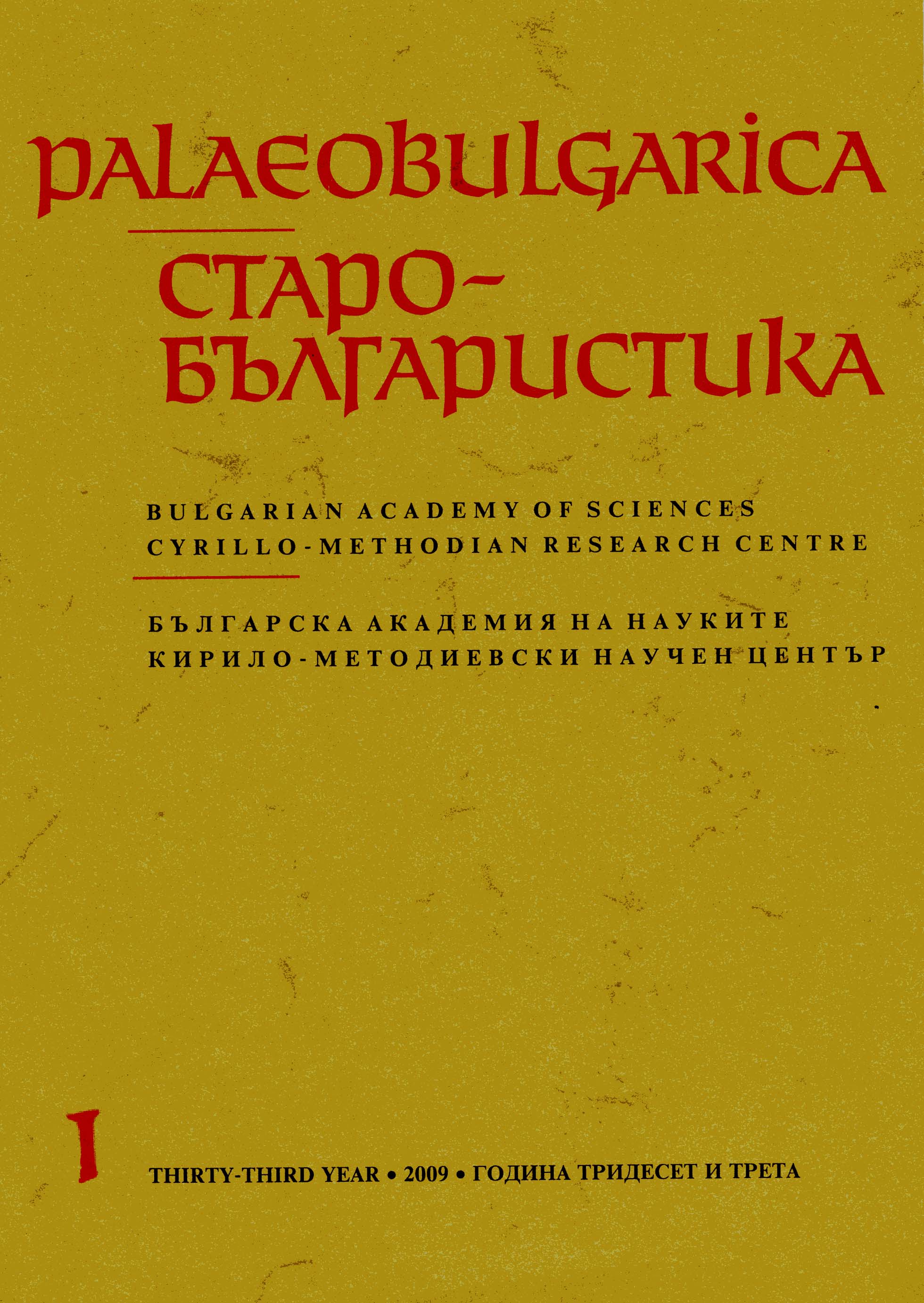За един hapax legomenon в славянската версия на Хрониката на Георги Синкел и за словообразувателното значение на u-основата в праславянски и старобългарски език
About a Hapax Legomenon in the Slavic Version of the Chronicle of George Synkellos and about the Derivative Meaning of the U-Stems in Proto-Slavic and Old Church Slavonic
Author(s): Anna-Maria TotomanovaSubject(s): Language and Literature Studies
Published by: Кирило-Методиевски научен център при Българска академия на науките
Summary/Abstract: The article explores both the origin and the development of the Old Church Slavonic hapax legomenon прёсэстовъ warp-beam’ preserved in the Slavic version of the Chronicle of Georgios Synkellos. Comparing прёсэстовъ to the similar жрьновъ found in the same text and explaining its development, the author proves that unlike жрьновъ (< жрьны) the Old Church Slavonic прёсэстовъ does not belong to the Proto-Slavic nominal -u/úv- stems but derives from the class of the deverbatives with a -tu- suffix. This class includes nouns such as брётва, желэтва, женётва/неженётва, жрьтва, ж_тва, кл_тва, ловётва, молётва, паства, ръватва, сэтва, хранётва, competing with the nouns with a -ьба suffix, such as гостьба, с©дьба etc. Some of these nouns changed their original meaning and began to designate not the process itself, but rather its results or the tools used during the process. This means that the original form of the hapax must have been прёсэствъ. Its existence in Old Church Slavonic allows us to reconstruct the noun прёсэства with the original meaning weaving’. The word appears to be a euphemistic name for an essential and sacral activity that the old Slavs perceived as a reverential sitting.
Journal: PALAEOBULGARICA / СТАРОБЪЛГАРИСТИКА
- Issue Year: 2009
- Issue No: 1
- Page Range: 26-32
- Page Count: 7
- Language: Bulgarian
- Content File-PDF

